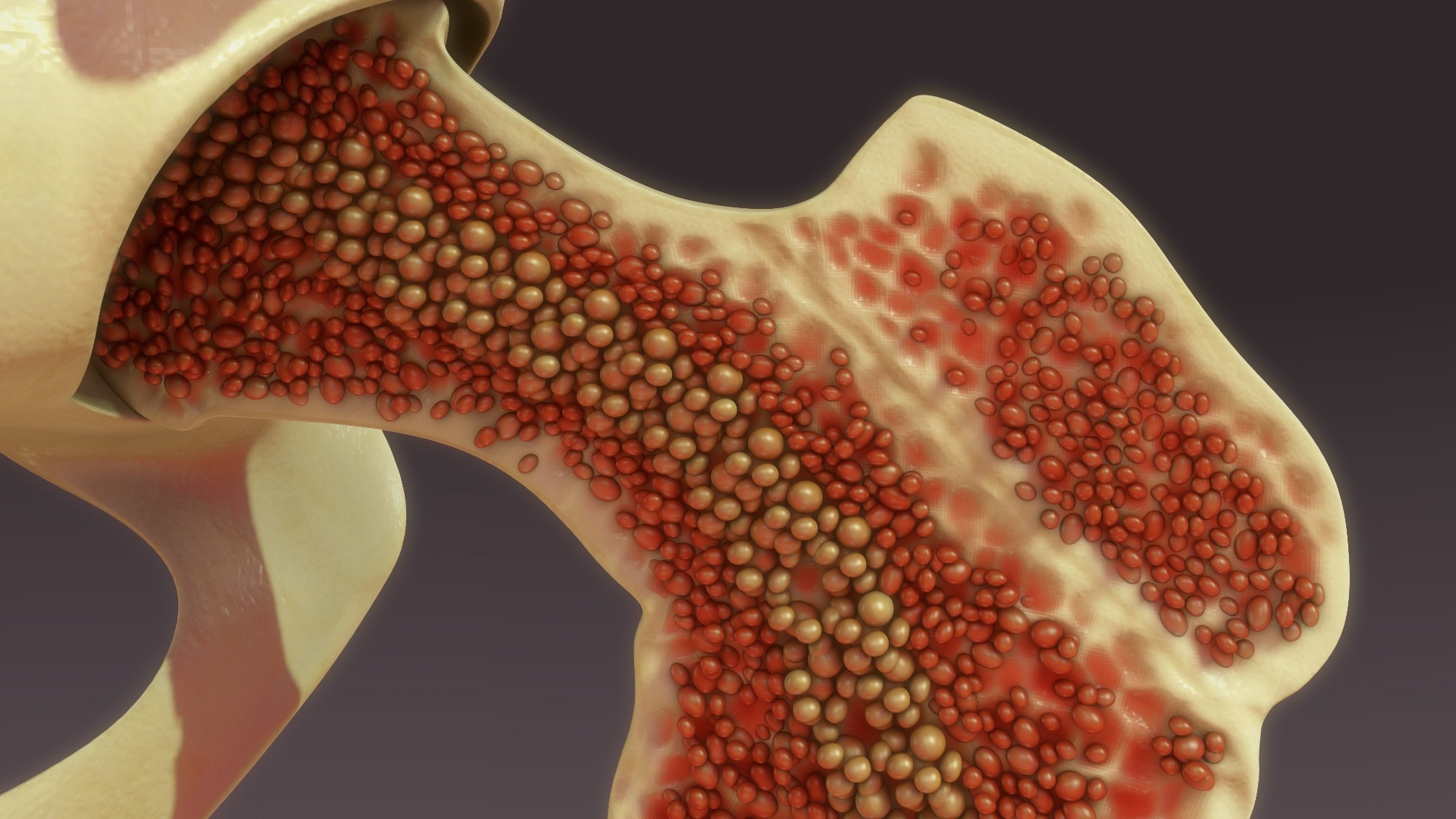In a recent study posted to the bioRxiv* preprint server, researchers assessed the long-term durability of plasma cells (PC) in human bone marrow (BM).
 Study: SARS-CoV-2 specific plasma cells acquire the phenotype of long-lived plasma cells in the human bone marrow. Image Credit: sciencepics/Shutterstock
Study: SARS-CoV-2 specific plasma cells acquire the phenotype of long-lived plasma cells in the human bone marrow. Image Credit: sciencepics/Shutterstock

 *Important notice: bioRxiv publishes preliminary scientific reports that are not peer-reviewed and, therefore, should not be regarded as conclusive, guide clinical practice/health-related behavior, or treated as established information.
*Important notice: bioRxiv publishes preliminary scientific reports that are not peer-reviewed and, therefore, should not be regarded as conclusive, guide clinical practice/health-related behavior, or treated as established information.
The establishment of long-lasting BMPC is essential for developing long-term humoral immunity. Studies have reported that SARS-CoV-2-targeted, affinity-matured, resting, immunoglobulin G (IgG)-secreting PC last in the human BM approximately six to seven months post-SARS-CoV-2 infections or vaccinations; however, the durability of BMPC cells has remained unclear.
About the study
In the present study, researchers assessed human BMPC durability.
The team evaluated the cluster of differentiation (CD)19- CD45- SARS-CoV-specific PC emergence in the human BM among eight samples of the femoral head (three and five samples from men and women, respectively, with a mean age of 73 years) by FC (flow cytometry) analysis between March and April 2022
Seven donor individuals mentioned having been administered three doses or four doses of coronavirus disease 2019 (COVID-19) vaccines, the majority of which were messenger ribonucleic acid (mRNA) vaccines and one individual did not reveal the vaccination status. The team evaluated the frequency of PC in total BM cells, and the frequency of cells specific for SARS-CoV-2 spike (S) protein subunit 1 (S1), receptor-binding domain (RBD), and nucleocapsid protein (NP) among the BMPC cells.
PC fractions were assessed based on the expression of CD19 and CD45 of the total BMPC and SARS-CoV-2-specific BMPC population and median values and interquartile range (IQR) values were calculated. PC comprising 0.8 % of the BM mononuclear cells (MNCs), and approximately 11,000 to 43,000 PC were individually available from the donors for the study. S1-targeted and RBD-targeted PCs were identified by dual staining of tetramers.
Results
CD19- PC were abundantly present in the human BM and secreted mainly IgG antibodies that are essential for the development of humoral immune protection comprising a few proliferating cells, expressing a pro-survival phenotype as CD95- /Bcl-2 (B-cell lymphoma) high, and secreted child vaccine-specific antibodies.
BMPCs were identified based on their increased CD38 expression and antibody lambda or kappa chain co-expression. The cells were confirmed as PC based on CD27 expression and high forward scatter signals. PCs specific for SARS-CoV-2 were identifiable at 0.13% frequency, comprising 28% IgA+, 64% IgG+, and ≤2% IgM+ BMPC cells. PC cells are specific for total antigens, mainly comprised of RBD-specific cells (median 0.1%) situated adjacent to 0,04% S1 subunit non-RBD protein epitopes.
The findings indicated antibody-secreting cell selection with neutralization potential that was higher against immunodominant epitopes of SARS-CoV-2 in the BMPC pool. Significant N-specific PC frequencies were observed in 0.1% (n=1) individuals, indicating that most persons had received COVID-19 vaccine doses but did not have prior COVID-19 history.
The total BMPC count exhibited differential CD45 and CD19 expression, with median values of 47% BMPC displaying the traditional CD19+CD45+ phenotype, 17% displaying the CD19-CD45+ phenotype, 18% displaying the CD19-CD45-phenotype, and 14% displaying the CD19+CD45-phenotypes. The findings indicated advanced PC maturation and PC longevity.
The non-canonical phenotypes of PC cells were also displayed by a significant proportion of SARS-CoV-2-targeted PC cells, with phenotypes as CD19+CD45- PC, CD19-CD45+ PC, and CD19-CD45- PC representing six percent, 10%, and four percent of PC population, sharing the long-lasting PC cell phenotype. Among blood specimens of five donor individuals, plasmablasts were identified with a median frequency of 0.5% of CD19+ B lymphocytes), a quantity similar to the steady-state PC quantity.
Four plasmablasts specific to SARS-CoV-2 were identified in blood samples of two donor individuals, and memory B lymphocytes comprised 0.9% (mean value) of the SARS-CoV-2-targeted PC population. The findings indicated that SARS-CoV-2-specific BMPC cells could possess several diverse phenotypes. The SARS-CoV-2-specific PC cells comprised lessee frequencies of longevity-associated and non-canonical phenotypes compared to the entire BMPC population, indicating that COVID-19 vaccinations induced BMPC cells specific for SARS-CoV-2, approximately 20% of which could survive in the long-term.
Further, a dynamic CD19+ BMPC cell count was observed, indicative of CD19+ PC adaptability to different challenges. CD19+ BMPC cells depended on peripheral blood B cell presence, and CD19+ human leukocyte antigen (HLA)-DRlow PC cells were identified in the post-vaccination blood samples.
The findings indicated that humoral anti-SARS-CoV-2 immune and memory responses are based on several types of PC cells with differing longevity, probably underlying PC subset regulation. Further, significant proportions of PC cells of the non-canonical type could emerge after quantifiably limited and timely SARS-CoV-2 exposure elicited as a response to COVID-19 vaccination.
Overall, the study findings showed that 20% of SARS-CoV-2-specific human BM plasma cells, including RBD-specific PC displayed the long-lived PC phenotype, namely, CD19-/CD45-. The findings underpin the formation of SARS-CoV-2-specific CD19+ and CD19- long-term BMPC cells in early stages post repeated COVID-19 vaccinations as an essential prerequisite for the development of durable humoral immune responses against SARS-CoV-2.

 *Important notice: bioRxiv publishes preliminary scientific reports that are not peer-reviewed and, therefore, should not be regarded as conclusive, guide clinical practice/health-related behavior, or treated as established information.
*Important notice: bioRxiv publishes preliminary scientific reports that are not peer-reviewed and, therefore, should not be regarded as conclusive, guide clinical practice/health-related behavior, or treated as established information.